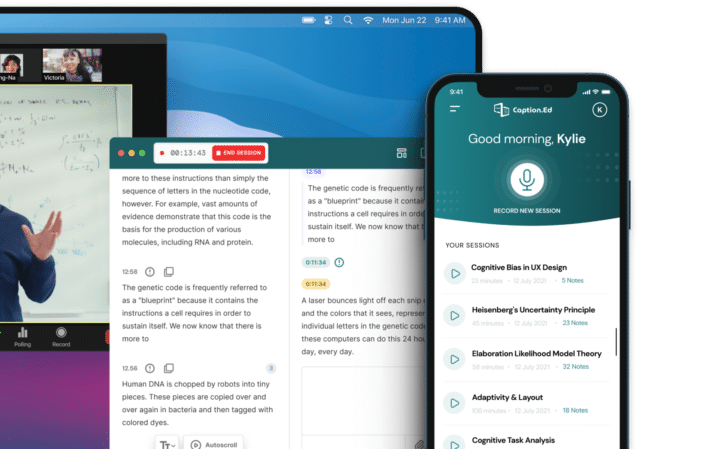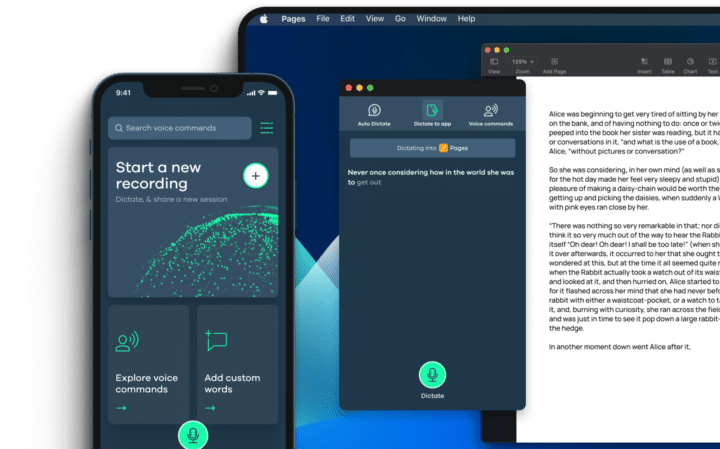So what is Assistive Tech? In this article, we’ll cover the basics. Plus we’ll give you insights into the range of available Assistive Technologies with some examples of its effectiveness in Higher Education settings.
What is Assistive Tech?
Assistive Technology describes any tools, products, or systems that help individuals with disabilities or impairments to carry out tasks and activities. Assistive Tech products support people who face difficulties with typing, writing, speaking, hearing, seeing, walking, moving, or understanding.
Want to Know More About Our Products?
Learn More
Specifically, AT supports students in Higher Education to manage specific learning differences such as dyslexia. But they can also support students with a range of complex needs including visual, speaking, or hearing impairments.
According to WHO, over 2 billion people will need at least one AT product to support them by 2030. Plus, since the 2014/15 academic year, there’s been a steady increase in the number of students who report a disability rising to almost 50% by 2019/20. So the need is growing.
What is Assistive Tech in Higher Education?
Young people can often experience overlaps between different types of learning obstacles. For example, research from RNIB reveals over 50% of young people with visual impairments also have additional special education needs or disabilities. So, to address these needs, various Assistive Technology tools are available to support students to complete their tasks, activities, or assignments, and act as an alternative way to overcome these difficulties.
To give you some examples, here’s our list of some of the critical tools used in university settings.
Voice-to-text
- Captioning: Captioning tools, like Caption.Ed, assist learners with specific learning differences and hearing impairments. And they do this by converting speech into words on a screen. They also boost comprehension while serving ESOL learners.
- Note-taking: Caption.Ed is also a note-taking tool that allows students with hearing impairments to embed their understanding through writing.
- Dictation: Voice dictation assists those who find writing difficult by transposing spoken words onto a screen.
Text-to-speech
- Optical Character Recognition (OCR) systems: OCR tools work to convert printed or written text into sound, so it’s readable by machines. Universities often use this type of Assistive Tech to support students with dyslexia when using handouts or paper-based information.
- Text-to-Speech apps and plugins: Various apps and platforms support the conversion of text-to-speech in Universities. For example, Staffordshire University uses ClaroRead Chrome to help with reading Google documents aloud to students.
Reading and Writing Tools
- Screen readers: Many universities promote screen reading tools that magnify or enhance the screen for visually impaired students. The University of York, for example, uses a programme called SuperNova to support students.
- Mind mapping: To support students with dyslexia, The University of Birmingham provides students with MindGenius, which is a mind mapping tool that facilitates visual learning.
Communication devices
- Augmentative and Alternative Communication (AAC): AAC tools help students who find speaking difficult to express themselves. They’re an advanced form of Assistive Technology that can either supplement or replace natural speech as audio tools.
- Assistive listening devices (ALDs): Students with varying degrees of hearing loss use ALDs to extend the range of their hearing loss. They’re often needed in large lecture halls where sounds can reverberate or compete for attention.
- Voice output communication aids (VOCAs): VOCAs use electronic speech to enable speech-impaired students to communicate. They’re usually operated via buttons or controls but include touch screens on iPads.
Ergonomic devices
- Keyboards and Mouse: Many students with mobile needs rely on adaptive keyboards or click-commands to support them with computer work and typing.
- Monitors: Many students need monitors to support them with mobility needs.
What is Assistive Tech used for in Higher Education?
Higher Education providers use Assistive Technology to support students with learning. But there are some specific ways they have an impact.
To Improve Accessibility
Improving rates of accessibility is critical to unlocking students’ potential. And there’s no better example of this than Caption.Ed’s founder Dr Rich Purcell.
To succeed in his studies with a dyslexia diagnosis, Rich recognised he needed extra help to understand the broad range of medical terminology. And so Rich embarked on creating his own Assistive Technology that included a medical dictionary which he then leveraged to complete his studies.
To Boost Academic Output
Introducing Assistive Tech to learning is a clear driver for increasing academic achievement. By enabling students to overcome their difficulties, AT unlocks students’ potential and gives them the confidence to achieve their academic goals.
To Foster Inclusion and Increase Well-being
AT supports a better sense of inclusion for students which, in turn, improves their well-being and mental health.
Various studies show that many aspects of student life improve with the use of Assistive Technology. One report showed accessibility and inclusion increased by 20%, with improvements in autonomy and to teaching and learning processes.
To Adhere to Accessibility Legislation
Of course, not only is it beneficial to students and faculty to provide appropriate AT, but ensuring website content is accessible is also a legal requirement. All web delivery platforms must adhere to the WCAG 2.1 AA standard to meet 2018 Digital Accessibility legislation. And Heads of Accessibility should be accountable for this.
CareScribe Offers Assistive Technology for Neurodivergent Users
Assistive technology can be used to support and enhance communication for people at workplaces and universities. CareScribe is at the forefront of assistive technology and our products address a wide range of needs.
Featuring a set of custom dictionaries with live captioning and note-taking functions, Caption.Ed can add captions instantly to your meetings, lectures or seminars, either in-person or online. You can also add timestamped notes, synced to your transcript, and highlight key information so you never miss out on the important stuff.
TalkType is highly accurate dictation software built for Windows, Mac, and mobile devices. Dictation software like TalkType can transform the way you work and study. As well as boosting productivity and efficiency, dictation software can provide autonomy to anyone who cannot type using traditional keyboards.
Caption.Ed and TalkType are dynamic AT tools that are transforming outcomes across many workplaces and universities.



